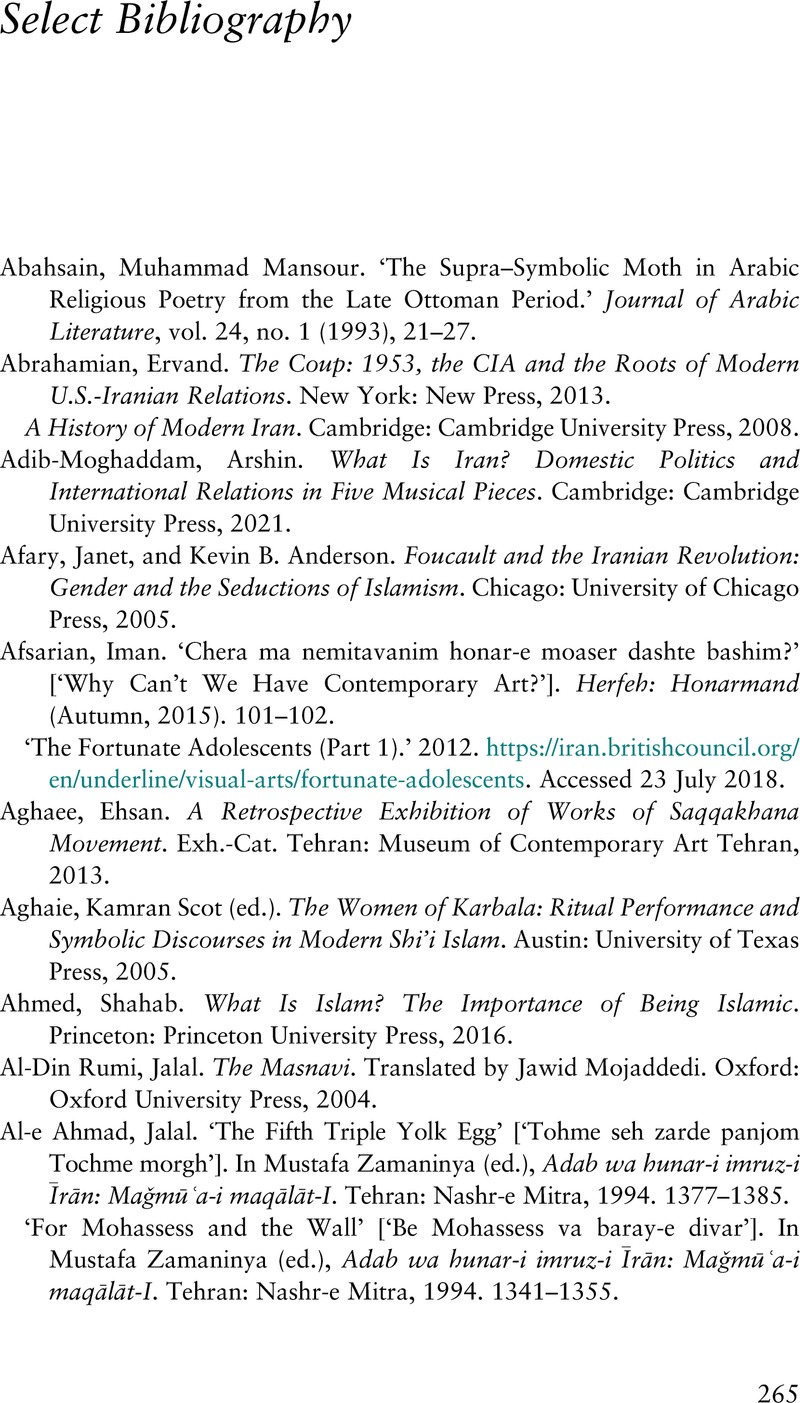Book contents
- The Cultural Politics of Art in Iran
- The Global Middle East
- The Cultural Politics of Art in Iran
- Copyright page
- Dedication
- Contents
- Figures
- Acknowledgments
- Introduction
- 1 Exhibitions of Modernist Iranian Art
- 2 Cultural Politics in Pahlavi Iran
- 3 “Saqqakhaneh Revisited”
- 4 Jalil Ziapour and the Fighting Rooster Association (Ḵorūs-e Jangī)
- Conclusion
- Select Bibliography
- Index
- References
Select Bibliography
Published online by Cambridge University Press: 07 September 2023
- The Cultural Politics of Art in Iran
- The Global Middle East
- The Cultural Politics of Art in Iran
- Copyright page
- Dedication
- Contents
- Figures
- Acknowledgments
- Introduction
- 1 Exhibitions of Modernist Iranian Art
- 2 Cultural Politics in Pahlavi Iran
- 3 “Saqqakhaneh Revisited”
- 4 Jalil Ziapour and the Fighting Rooster Association (Ḵorūs-e Jangī)
- Conclusion
- Select Bibliography
- Index
- References
Summary

- Type
- Chapter
- Information
- The Cultural Politics of Art in IranModernism, Exhibitions, and Art Production, pp. 265 - 282Publisher: Cambridge University PressPrint publication year: 2023



